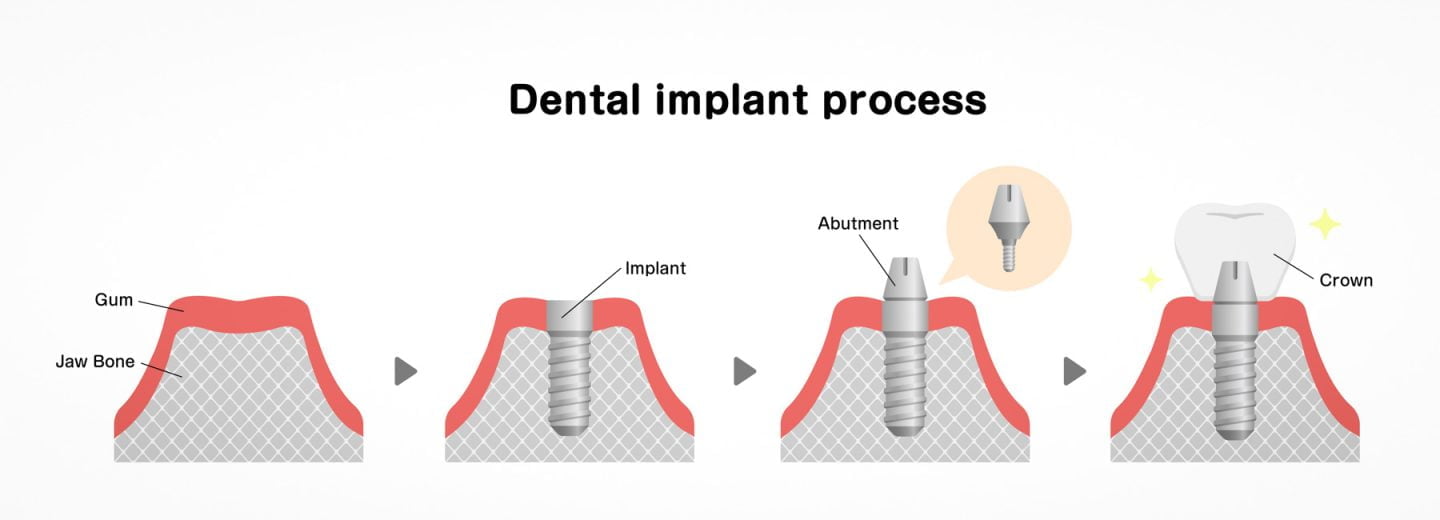The treatment process for getting a dental implant typically involves several steps and can take several months to complete. The exact treatment plan will depend on your specific needs and circumstances. The general steps in the treatment process for a dental implant are:
- Consultation: The first step is to have a consultation with one of our dentists to determine if dental implants are a suitable option. We will assess the your oral health and medical history, take x-rays and other imaging studies (such as 3D scans and photos) and discuss the treatment options with you.
- Planning: If you are a candidate for dental implants, we will create a treatment plan, which may include any necessary pre-surgical procedures, such as a bone graft, gum graft or sinus lift, with all associated treatment costs. If you are having all your teeth replaced we will design a new smile for you. (See Smile design for more information)
- Surgery: The next step is the surgical placement of the dental implant. This is typically performed under local anaesthesia, and the procedure can take several hours. Dr Laura will make a small incision in the gum tissue and place the implant into the jawbone, with a surgical guide whenever possible (see below). The incision will be closed with stitches, and the implant will be left to heal and integrate with the jawbone for several months. If it is a front tooth, Dr Laura will provide you with a temporary healing tooth. If you are having all your teeth replaced with implants, (see full mouth teeth on implant)
- Healing: After the surgery, you will need to follow Dr Laura’s instructions for post-surgical care, which may include taking medications and avoiding certain foods. The implant will need to heal and integrate with the jawbone, which can take several months. Laura and her team will monitor the healing process and provide any necessary follow-up care.
- Restoration: Once the implant has healed and integrated with the jawbone, we can attach a small metal post, called an abutment, to the implant. This will serve as the base for the final restoration, which can be a crown, bridge, or denture. The dentist will take a digital scan of the implant and surrounding teeth to create the restoration (crown), which will be custom-made to match your natural teeth.
- Maintenance: After the dental implant is restored, you will need to practice good oral hygiene and visit the dentist regularly for check-ups and professional cleanings. With proper care, dental implants can last for many years.
Overall, the treatment process for a dental implants can take several months to complete, but the results will be well worth the wait. Dental implants can provide a long-term solution for missing teeth and can improve your ability to eat, smile and your overall health.

